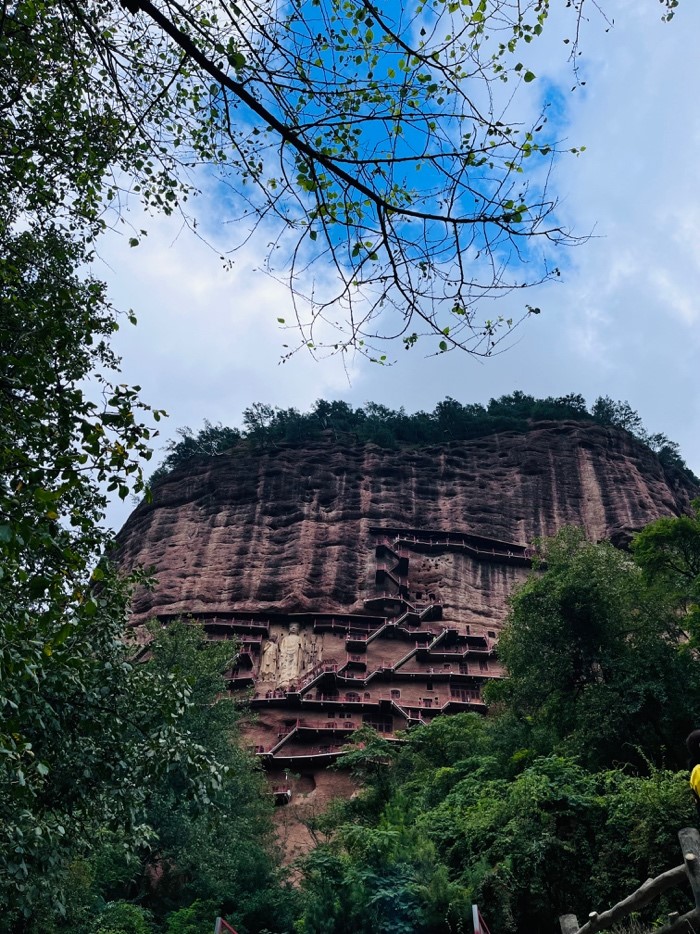My Gansu Trip

The Maijishan Grottoes in Tianshui, Gansu province [Photo provided to gogansu.com]
Maijishan is strategically located along the east-west route connecting Xi'an with Lanzhou and eventually Dunhuang. There is also a southern route that links Xi'an with Chengdu in Sichuan, and even regions as far as India. At this crossroads, many of the sculptures from around the 6th century in Maijishan bear the artistic influences of India and Southeast Asia, which likely arrived via these north-south routes. Initially, the artistic influence came from Central Asia through the Silk Road in the northwest. Later, during the Song and Ming dynasties, the caves underwent renovation, and the artistic style shifted to become distinctly Chinese.
Originally, cave shrines in China served dual purposes. Before the arrival of Buddhism, they might have been local shrines used for the worship of ancestors or nature deities. However, with Buddhism's spread to China, and influenced by the long-standing tradition of cave shrines from India and Central Asia, these caves became integral to Chinese religious architecture.
From the main gate of Maijishan, we took a ferry car tour to the mountain. The experience was both scenic and culturally enriching. I noticed a variety of local shops selling handmade jewelry, foods, toys, and souvenirs. I purchased a magnet as a keepsake of my trip. A memorable moment was when photographers took pictures of us, which we later bought as a token of the journey. This entire trip remains etched in my memory.
As a Buddhist, visiting Maijishan was not only a travel experience but also an opportunity to learn more about the stories and heritage of Buddhism in China. The architectural wonder and deep historical significance of the Maijishan Grottoes left me in awe, and I hope to visit this UNESCO World Heritage site again and again in the future. It was an experience of great joy, and I left the place feeling deeply fulfilled.
